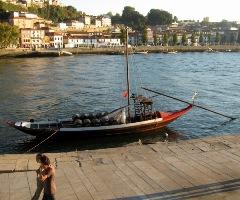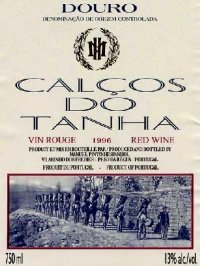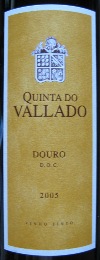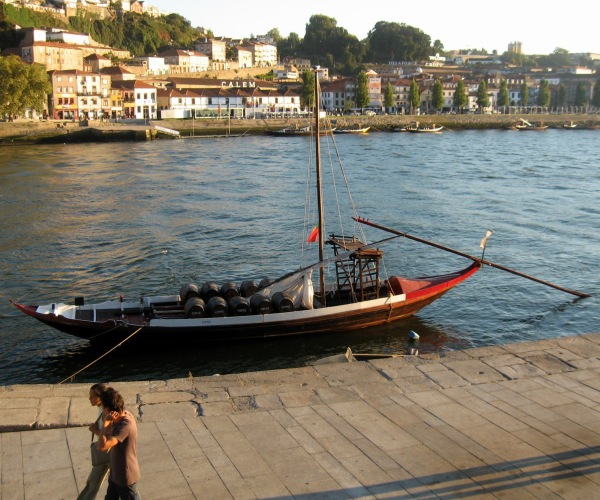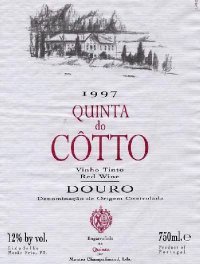In this installment of "A Rich Pour", Cigar Weekly's Managing Editor Doug Kuebler (jazznut) profiles the emergence of exciting dry red wines from a region better known for its classic Ports - the Douro.
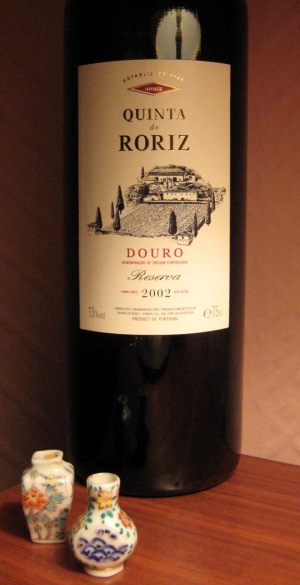
A touch of the soil seeps into the fruit
Old and new
The Iberian Peninsula is a happening place when it comes to red table wine. With new and not quite so new regions such as Alentejo, Estremedura, Priorato, Ribatejo, Ribera del Duero, Somontano and Toro attracting wider attention, skilled Iberian viticulturalists are rising to the challenge of satisfying a consumer demand for well crafted, unique wines. Ironically, the one Iberian area that possesses perhaps the greatest potential of all constitutes the oldest demarcated wine region in the world - Portugal's Douro valley.
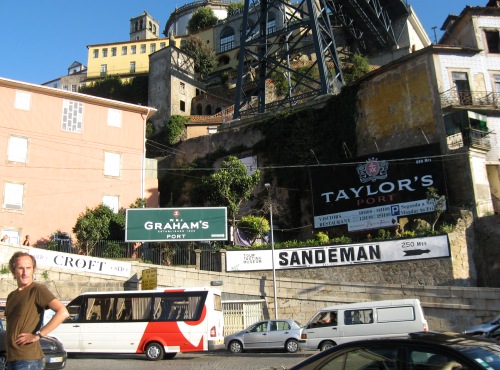
Vila Nova de Gaia, home to the world-famous Port lodges
Chianti and Tokay may outdistance their Portuguese counterpart in terms of established longevity. But the Douro retains an ace in the hole, its 250-year old zone boasting, from day one, legislated quality control standards and a classification system. The Vitis vinifera phenomenon is far from a recent occurrence, either, seeds of three to four millennia worth of antiquity having been unearthed near Mirandela. As in many other parts of Europe, however, the era of the late Roman Empire marked the real beginning of organized cultivation of the vine here. Also, impressive though the 1756 demarcation may seem, it pertained only to production of Port wine. Douro table wines would wait until 1979 to be accorded Denominaçao de Origem Controlada status.
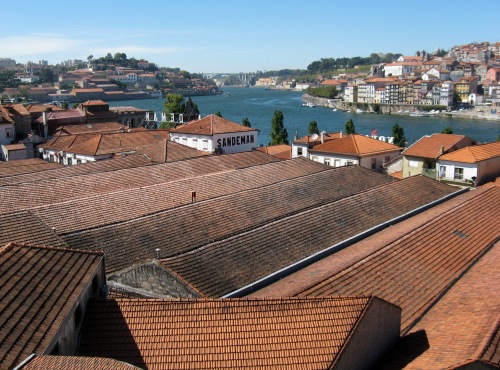
Rooftops and river
Caught between a rock and a hard place
Two words best describe viticulture in the central and upper Douro - dry and exhausting. The steep sun-baked slopes, largely sheltered from rainfall by the Marao and Montemuro mountain ranges, and the predominantly Pre-Cambrian, granite-laced schistous soil present formidable challenges to anyone wishing to plant and harvest. It is little less than a miracle, then, to take in the sheer magnitude of the region's vine-covered terraces lying beneath peaks that rise hundreds of meters above the valley floor.
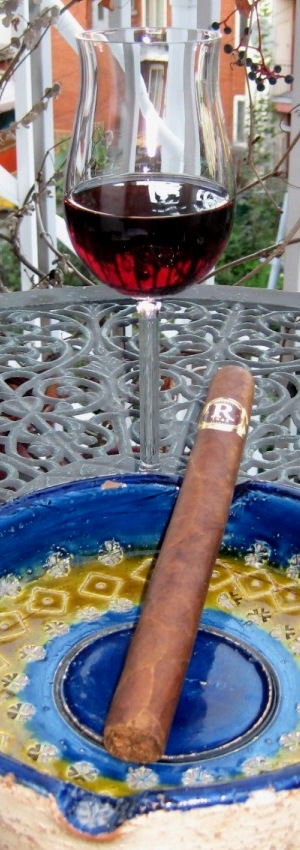

There's more to the Douro than simply Port
What's more, the grapes themselves are, by and large, exceptional. Touriga Nacional compensates for low yields with its dark color, unbelieveabe fruit and tannic grip. Tinta Roriz, elsewhere known as Tempranillo or Aragonez, lends lushness and complexity. Touriga Franca offers a more ethereal finesse. Tinta Cao brings floral and fruity refinement. Tinta Barroca adds a subtle softening touch. Tinta Amarela may be finicky to harvest, but its perfumed quality is worthy of consideration in a blend. And Sousao is yet another deeply colored and intensely flavorful fruit. Many other venerable varieties grace the hillsides and plateaus of the Douro. The aforementioned seven, though, constitute the primary ones for quality red wine production.
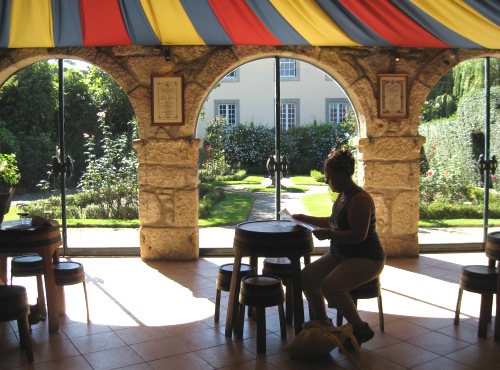
A quiet terrace and a wine tasting menu in hand... perfection
Visionary vintner
If any individual can be considered responsible for elevating the dry red wines of the Douro beyond the status of local curiosities, that person is Fernando Nicolau de Almeida. Spurred on by an eye-opening visit to Bordeaux, he envisaged a Douro alternative to the French examples he tasted and saw being made. Nicolau de Almeida drew upon years of experience in the Port trade as well as a sixth sense of what might work. He mixed Port grapes gathered from the Vale de Meao estate together with more acidic varieties harvested higher up in the hills, hauled blocks of ice into the remote countryside in an effort to control fermentation temperatures, and brought his first vintage to fruition in 1952. Fernando Nicolau de Almeida couldn't imagine at the time that his Barca Velha would come to be recognized as one of the world's great wines.

The inimitable one
Despite being handicapped by a lack of modern equipment, Nicolau de Almeida remained a stickler for quality. He monitored the evolution of his wine like a hawk and steadfastly refused to release Barca Velha in any but the very top years, preferring to market merely excellent vintages under the Ferreirinha Reserva Especial banner. Furthermore, with dry Douro yet to be officially sanctioned by the authorities, Nicolau de Almeida was initially obliged to label his as mere table wine. No matter. The rare Barca Velha soon acquired legendary status for its exceptional aroma, taste and ability to mature gracefully.
Fernando Nicolau de
Almeida... a true pioneer
Following in the footsteps
Regardless of the reputation of Barca Velha, serious interest and investment in the vinification of dry red wines from the Douro really only commenced during the final portion of the 20th-Century.
Sogrape, Portugal's largest wine firm, purchased Casa Ferreirinha in 1987, and has since moved the home of the flagship Barca Velha to its Quinta da Leida facility. There, José Maria Soares Franco oversees production of an expanded repertoire that now includes the spicy, contemporary, usually ready to drink Callabriga, the more austere and authentic bottle-aged Reserva, the elegant, aromatic Quinta da Leida and, of course, the distinguished Barca Velha itself.
Many others joined the dry red Douro parade, among them Dirk Nieport with his holdings near the Rio Tedo, Montez Champalimaud at Quinta do Cotto, the Roquette family at Quinta do Crasto (with winemakers Dominic Morris and Susana Esteban), the Bergqvists at Quinta de la Rosa (with winemaker Jorge Moreira) and Joao Roseira at Quinta do Infantado (with winemakers Luis Soares Duarte and Fatima Ribas). The Symington clan, in concert with the Prat family of Bordeaux, christened a cuvée entitled Chrysela, its grapes sourced from three vineyards including the renowned Quinta do Vesuvio. As if to further highlight the visionary wisdom of Fernando Nicolau de Almeida, his son, Joao Nicolau de Almeida, and José Ramos Pinto Rosas joined forces to develop the lovely Duas Quintas range. Grapes used for Duas Quintas emanate from Quinta da Ervarmoira and Quinta dos Bon Ares in the Douro Superior. Francisco Olazabal, who departed Ferreira in the late 1990s to initiate bottling of his own table and Port wines from the old Quinta do Vale de Meao, and Domingos Alves da Sousa of Quinta do Vale da Raposa, are yet two more noteworthy contributors to the region's red wine revolution.
These producers' wines, whether leaning towards tannic muscularity, rounded generosity or a melding of the two, display an addictive abundance of fruit akin to that found in most Vintage and Late Bottled Vintage Ports. In this sense, the finest of them may have no equals. Even better, the characteristically intense fruitiness of the Douro grapes finds its way into less expensive everyday wines.
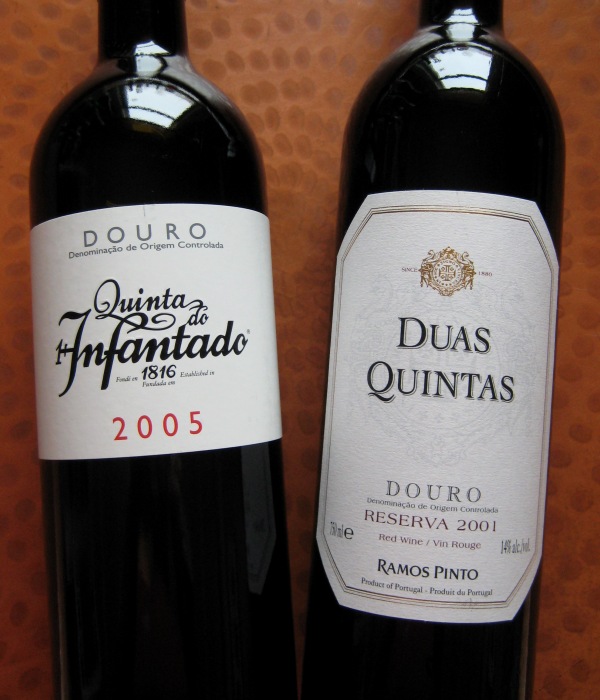
Liquified fruit so vibrant you can almost bite into it
Vintages
One facet of dry reds from the Douro that has struck me down through the years is their remarkable consistency. After all, we're not dealing here with grapes grown and harvested in such capricious climatic conditions as exist in, say, Burgundy or the Mosel. Inoportune rains do fall from time to time, but not with anywhere near the frequency that other famous winegrowing regions experience. That said, 2001, 2003 and 2004 probably comprise as fine a trio of vintages as you are likely to encounter. 2005 remains questionable owing to severe heat and drought, though more than a few excellent wines will doubtless be produced in this year as well.
Wine notes
With so much ground to cover, I can only present a tiny sampling. Here goes...
-
Quinta da Avaleda "Charamba"
Charamba is light bodied and fresh with a slight bitterness on the finish - easily as enjoyable as many an inexpensive Valpolicella. Don't expect any real Douro fireworks, however.
-
Symington Family Estates "Altano"
This supple wine offers generous fruit, held in check by just the right degree of acidity and tannins, in a straightforward, modern style. It comes across as unpretentious and pleasant to drink, and the low cost is easy to swallow as well. The more expensive Reserve kicks the stylistic sophistication and substance up several notches, though still exhibiting a supple side.
"Quinta de Calcos do Tanha"
Manuel Pinto Hespanhol's medium to full bodied wine sports a more muscular Douro demeanour, and is well balanced, attractively fruity and lingering on the palate.
-
"Quinta de Castelinho"
The dry reds from the Saraiva family's property are generally forthcoming in style with good richness and roundness. The Reserva offers additional oak nuances. A consistent performer.
"Quinta de Roriz"
The wines of this estate amply reflect both the fruit and the soil of the region, with the Reserva displaying a decidedly schistous backdrop to counterpoint the core flavours of dark, ripe berries. This wine is almost French in terms of its elegant restraint.
"Quinta do Vallado"
Francisco Olazabal's vinous essays from the heart of the Douro valley are always worthy of a detour, displaying as they do an elegant restraint that cradles the rich fruit.
"Quinta do Crasto"
1994 marked the first commercially available vintage of this pure and elegant wine, which shows an alluring touch of oak. The winery also offers single varietal versions such as Touriga Nacional and Tinta Roriz.
-
"Quinta de la Rosa"
Initially released in 1988, this vibrant and relatively full bodied wine deftly pits oak-induced piquancy against bright berry fruit. A 2003 vatting of Touriga Nacional has been described as notably fragrant and floral.
A place where tradition and innovation exist side by side
-
"Quinta de Vale da Raposa"
Alves de Sousa is known for the expressive nature of his wines, which exhibit an almost voluptuous concentration along with supple tannins. The Grande Escolha possesses a tighter structure from further maturation in wood, and needs more time in the bottle to show at its best.
-
"Quinta do Infantado"
One of my favourite Port producers (even its base-level Ruby Port puts many Late Bottled Vintage examples to shame), this very reputable estate also makes characteristically fleshy and fruity table wines. Well worth a full glass.
-
Adriano Ramos Pinto "Duas Quintas"
I never tire of this one. The combination of mouth-filling dark fruits, firm underlying structure and a most reasonable asking price makes for a rather nice ride. And the wine will cosy up to just about any braised, barbecued or grilled meat you can throw at it. Should you intend to plan a more sophisticated menu, the admittedly more expensive Reserva, vinified predominantly from Touriga Nacional grapes and oak aged, will certainly satisfy you with its more restrained and elegant style.
Montez Champalimaud "Quinta do Cotto"
Both the regular cuvée and the more upscale Grande Escolha are uncompromisingly deep, brooding, substantial wines of considerable character that take to cellaring with a vengeance. Personally, I quite enjoy the former when it's young and a little surly, as the rich fruit almost seems to want to climb out of the glass. You be the judge.
-
Ferreirinha "Esteva"
As the entry-level representative from this winery, Esteva projects a fair degree of fruit concentration, and is a simple and rustic yet pleasurable pour for the price.
-
Ferreirinha "Vinha Grande"
This wine attempts to echo the Barca Velha experience at far less expense. Solid and firm yet not abrasive, it offers a good balance between ripe berry fruit and tannic grip. It represents an excellent value, and is very representative of the more traditional side of the Ferreirinha house style.
-
Ferreirinha "Barca Velha"
The Old Ship displays blazingly focused cherry and blackcurrant fruit bordering on a deliciously tart wild blueberry sensation, while toasted oak tones and hints of cooling eucalyptus and mint sometimes lurk in the background. The wine develops floral and cedar overtones as it unfolds in the glass. It manages to dance nimbly on the palate despite the depth and intensity of flavor, and often takes a long time to come around. Expensive? Yes. Inimitable? Absolutely!

Referenced books and articles:
Fallowfield, Giles. "Turning the Tables", Decanter Magazine, Vol.23, No.3, November 1997, London, England, pp.44-47
Parnell, Colin. "The Ship Comes Home", Decanter Magazine, Vol. 16, No.9, May 1991, London, England, pp.122-124
Phaneuf, Michel. Le guide du vin, 25ème éditon, Les Editions de l'Homme, Québec, Canada 2005, pp.289-295
Referenced websites:
Robinson, Jancis. "A guide to the new Douro", February 5th, 2005, http://www.jancisrobinson.com/articles/winenews050205
Stanislawski, Dan. "The Individuality of Portugal: Chapter 1 - Landforms of Northwest and West Iberia", The Library of Iberian Resources Online, http://libro.uca.edu/stanislawski/Chap1.htm
And...
http://whc.unesco.org/archive, "Alto Douro (Portugal)", Abstract No.1046, June 2000
http://www.i-winereview.com/reports, "Report No.2 - Red Table Wines of Portugal", The International Wine Review, January 2006
http://www.wineanorak.com/douro, "The Douro wine revolution"
Doug Kuebler (Jazznut) is an inveterate aficionado and collector of wines and whiskies from around the world. Doug has organized wine and food seminars, and written extensively on wines and liquors. His latest book set, The Tumbler's Guide to Single Malt Scotch Whisky: Desk Reference and Field Guide, is available from Topeda Hill Publishing.
